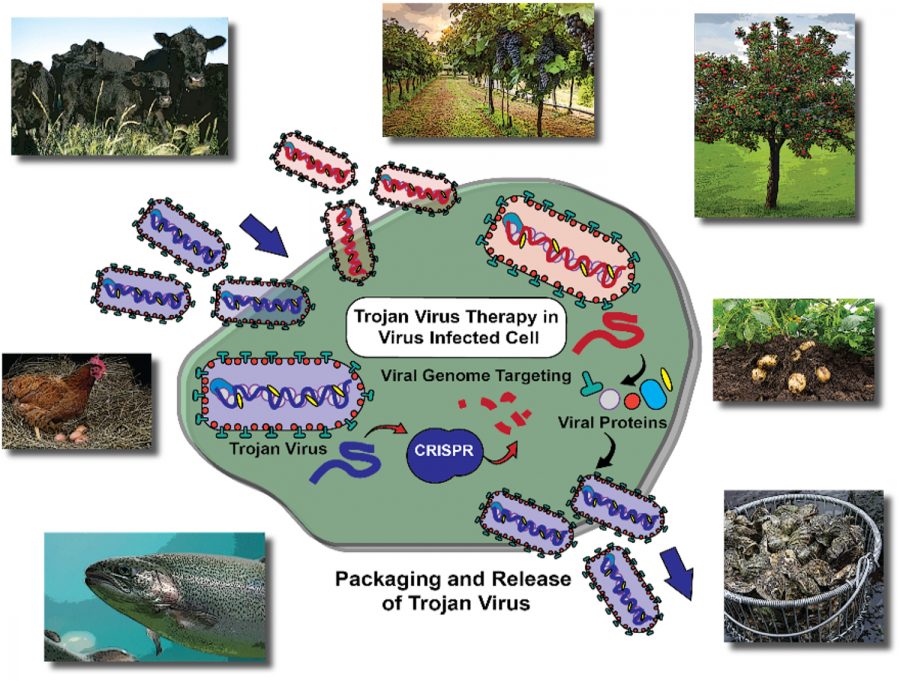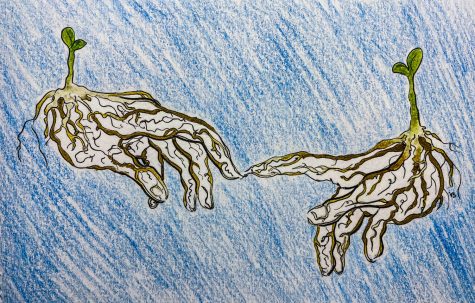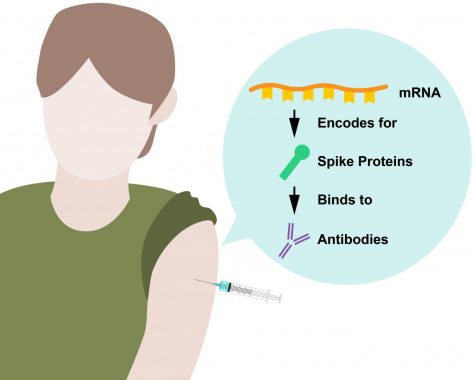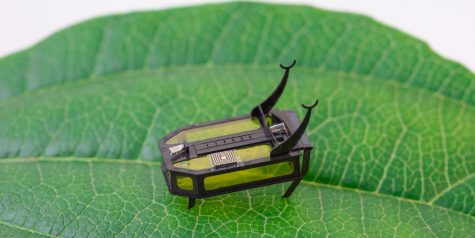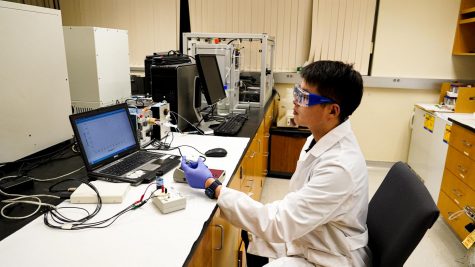Trojan horse but in virus form
Trojan virus might help fight COVID-19 as coronaviruses are similar to IHNv, a fish virus
The diagrm shows how the Trojan virus carries part of the disease. After the cell is infected, it will divide and replicate to destroy the disease-causing cell.
December 9, 2021
WSU researchers received a grant to develop a new virus-killing technology against COVID-19.
The Trailblazer Award from the National Institute of Health and National Institute of Biomedical Engineering and Bioengineering was given to WSU researchers to explore possible treatment options for COVID-19, said Michael Phelps, assistant professor and lead researcher.
The grant will later be used to study how the Trojan virus can be used to treat COVID-19, said Kailash Bohara, graduate student in animal sciences. The goal is to create a virus that can enter into cells without causing the disease.
Phelps said he developed the idea of creating a Trojan virus after previous work with gene therapy, where viruses are stripped out of deadly genes.
The researchers have already created the Trojan virus, but it has not yet been tested, Bohara said. Similar technology will first be used on a fish virus called IHNv, infectious hematopoietic necrosis virus. The RNA virus is common in rainbow trout and salmon.
The fish and coronaviruses have similar structures, he said. They both have spikes and capsids that enclose the virus genome.
A virus has different gene segments in a signal. It is able to integrate into the cells of humans or animals, Bohara said. When a disease-causing virus infects a cell, it begins to replicate and divide itself. Once it is divided, it works to kill the cell and then spread to other cells.
The Trojan virus will have some part of the disease-causing virus and will be injected into the cell. It will then divide and replicate to help destroy the disease-causing cell.
The researchers are using CRISPR, which kills viruses in an acquired immune system in bacteria, he said.
“Essentially what we are doing is putting the CRISPR, the virus killing part, inside those sequences,” Phelps said. “[The Trojan virus] is tricking the virus into thinking it’s another coronavirus, and then the genes will package it up.”
A virus has its own genome and on each side, it has specific sequences. The genes made by the virus look at the sequences and package the DNA into themselves, Phelps said
The Trojan virus needs all of the genes from the coronavirus in order to replicate itself, he said. So if it gets into a cell that is not already infected, it cannot do anything.
“That’s kind of the idea of the name — that we’re masking the CRISPR in the virus itself, or the backbone of the virus, so it looks very similar and invites it into the cell, only to be killed by it,” he said.
Previous research shows that CRISPR is able to kill many viruses, including COVID-19, Phelps said. However, the issue is delivering CRISPR in the form of a treatment. It cannot be delivered to the tissues that it needs.
“The hypothesis is that if we mask [the Trojan virus] to look just like a Coronavirus, then it can replicate itself and spread,” Phelps said.
When using the technology against another virus, like the fish virus, the outside sequences need to be changed to look like the virus that is going to be destroyed, he said.
“The Trojan virus won’t cause a disease, but it will continue replicating on the cells and killing the original virus,” Bohara said.
The team will not be able to work with the live coronivirus because it is deadly, Phelps said. Genetically engineered cells with proteins that can copy the Coronavirus will be used as a safe model system instead. The trials are just beginning, and the researchers will need to prove that the technology works before moving to mice, then possibly humans.
Bohara said the technology will not be as effective as vaccines and is not a replacement. Instead, the virus will aid vaccines.
When a body receives a vaccine, it then starts to produce antibodies to fight a virus and get rid of it, he said. When the Trojan virus is injected, antibodies do not need to be produced because it is doing all the work to fight off the original virus.
Similarly, antibody treatments are used to boost and help the immune system fight off a virus, Phelps said. The Trojan virus will not need the help of the immune system; it is independent and will hunt down another virus.
Bohara said the Trojan virus can be used with most other RNA viruses, with some minor adjustments, if the technology is successful.
It is a high-risk, high-reward project, he said. It is just the beginning, and there will be many flaws that need to be worked out.
If the first set of trials are successful, then the Trojan virus will be ready to test on rainbow trout eggs, Bohara said.
The technology is a fairly new concept, he said. Similar branches of research have been done in the past, but nobody has replicated virus particles.
“This is a totally new concept,” Bohara said. “You are creating a live virus that can infect the cell but cannot cause the disease. It can replicate itself, it can kill the virus that causes the disease, and it also converts the disease-causing virus into a Trojan virus.”
In the future, the Trojan virus technology could be used to prevent infections or possibly be used in other animals, Phelps said.
Phelps said he predicts the technology will not be ready to use in the current pandemic with COVID-19, but the idea is that it will be ready for future pandemics as a tool to fight viruses in advance.

